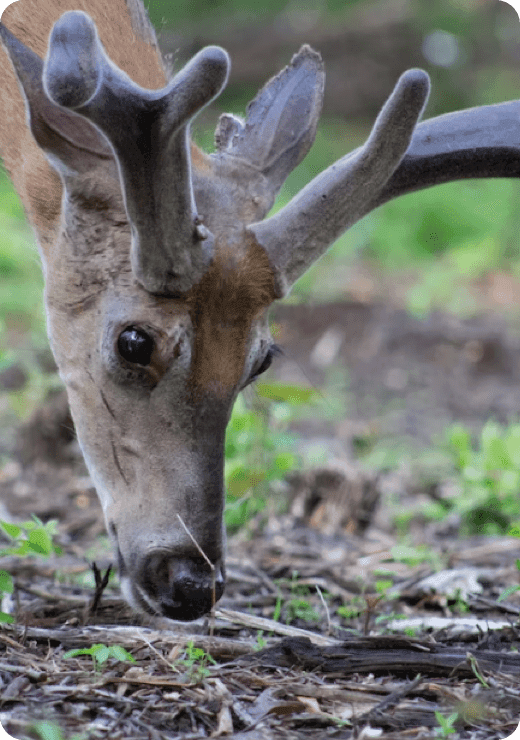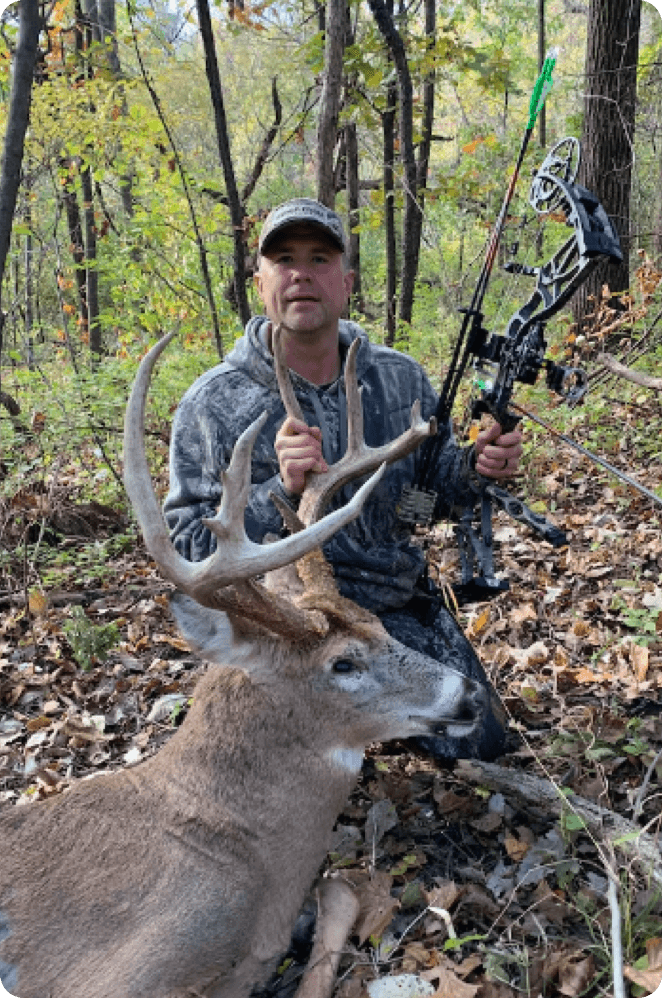Book your next Kansas Whitetail hunt with LandTrust, the best way to hunt private land.
Find your next Kansas Whitetail hunt by Unit.
Unit 1
Located in the northwest region of the state bordering Nebraska and Colorado, Unit 1 is known for its excellent whitetail hunting. The area is diverse, with a mix of rough draws, hilly rangeland, dry rolling farms, irrigated farms, and brushy creeks with tree-lined banks.
Unit 2
Located in the high plains region and bordering Colorado and Interstate 70 to the north, Unit 2 offers excellent hunting opportunities for whitetail. The landscape is a blend of prairies, dry farms, creek bottoms, and farmland - great habitat for a whitetail!
Unit 4
Unit 4 is right in the center of the state. Most of the land drains into Smoky Hill River and supports a healthy populatio of mule deer and whitetail deer. Most deer find cover on private farms and range land.
Unit 5
This unit stretches along both sides of the Arkansas River from Ness to Great Bend and almost to Hutchinson. It is known for its good whitetail hunting, with more pockets of brush and tree cover than other areas to the west.
Unit 6
Located northwest of Hutchinson in the center of the state, this unit is home to a large population of whitetail deer. The central part of the unit is characterized by round center-pivot irrigated fields, while the rest of the unit is mostly made up of rectangular dry farms and pastures.
Unit 7
Unit 7 is located in northcentral Kansas and borders Nebraska. this unit is known for its large number of mature whitetail bucks. The woods in this area are larger than in units to the west, contributing to the survival of bucks despite lower hunting success rates.
Unit 8
Renowned for its whitetail hunting, this unit near the Nebraska border boasts a healthy deer population. Stretching north of Interstate 70 from Salina to just south of Manhattan in the west, it offers diverse hunting opportunities. Most deer are harvested in and around woodlands, which range from narrow strips of riparian trees and brushy undergrowth to broader bands of timber and small to medium-sized woodlots.
Unit 9
This unit, which borders Nebraska and stretches south to the area between Topeka and south of Manhattan, is known for its excellent whitetail hunting opportunities, especially on the hundreds of square miles of private land. This region is characterized by flat lands and rolling hills that drain into a variety of creeks and rivers, most of which are lined with brush and trees.
Unit 10
This unit is located in the northeastern corner of Kansas and offers excellent habitat for whitetail deer, with hundreds of farms, pastures, woodlots, and river and creek bottoms. The unit also includes an urban hunting area between Topeka and Kansas City, as well as on Fort Leavenworth, while the eastern half of the unit is characterized by dense woods.
Unit 11
Unit 11 is located in the southeastern corner of the state, bordering Missouri and Oklahoma, and is predominantly made up of private lands. The region is home to a large number of whitetail deer, which inhabit a patchwork of farms, pastures, and woodlands on both flat and hilly terrain.
Unit 12
Adjacent to Oklahoma near Sedan, this unit offers a substantial population of whitetail bucks across its extensive mix of woodlands, tallgrass prairie hills, flatlands, and numerous fields and pastures. Hunters who invest time in scouting to understand the travel patterns of the bucks can find success by stand hunting during the early morning and late afternoon. Deer activity peaks significantly during the rut in early November and persists until the start of the rifle season. As the season progresses, focus on identifying where bucks are feeding, and set up ambushes at food sources or along their travel routes between bedding and feeding areas.
Unit 13
Located near the Oklahoma border, south of Wichita, this unit is predominantly private, with limited public hunting access and few walk-in areas available. The terrain is mostly flat or gently rolling, though some steep slopes lead down to rivers. To increase your chances of success, scout before the archery season using trail cameras set up near bait sites, and then hunt promising locations from tree stands. During the muzzleloader season, bucks tend to be less active, but they often form groups and can be patterned as they travel and feed together. Use a high-quality muzzleloader, and once you identify where the bucks are active during daylight, set up your stands ahead of time and exercise patience. Additionally, consider partnering with someone to encourage bucks to move through the dense cover they prefer.
Unit 14
This large unit encompasses land in 14 counties around Emporia and features a diverse range of landscapes, including prairie land, farms, ranches, woodlots, and riparian brush and timber. The area supports good numbers of whitetail deer and is particularly favorable for bucks due to the availability of both feed and cover in close proximity. This is facilitated by the presence of numerous edges between timber, brushy draws, farmland, and prairie land.
Unit 15
This unit is primarily composed of farmland and prairie pastures, and it is known for producing a high number of mature bucks each year. Most of these bucks find cover in thousands of acres of timberland and brushy thickets, which are predominantly located along rivers and creeks.
Unit 17
Unit 17 encompasses Hamilton, Kearny, and Finney counties, as well as parts of 14 other counties. Located on the high plains, this unit borders Colorado and is mostly made up of wide-open grasslands, dry farms, and irrigated crop fields. The area supports limited populations of whitetails, who make their home primarily on private lands.
Unit 18
This arid prairie unit in the southwestern corner of the state is home to whitetail and mule deer. The land in this region is generally flat to slightly rolling, though there are some hilly areas that are not suitable for farming. There are also a few cliffs that overlook the Cimarron River, which is the main drainage for the area.
Discover More
- Kansas Turkey Hunting Units
- Kansas Waterfowl Hunting Units
- Kansas Quail Hunting Units
- Kansas Dove Hunting Units
- Kansas Coyote Hunting Units
- Kansas Pheasant Hunting Units
- Kansas Mule Deer Hunting Units
- Kansas Rabbit Hunting Units
- Kansas Partridge Hunting Units
- Kansas Antelope Hunting Units
- Kansas Duck Hunting Units
- Kansas Other Hunting Units
- Kansas Whitetail Unit 1
- Kansas Whitetail Unit 2
- Kansas Whitetail Unit 4
- Kansas Whitetail Unit 5
- Kansas Whitetail Unit 6
- Kansas Whitetail Unit 7
- Kansas Whitetail Unit 8
- Kansas Whitetail Unit 9
- Kansas Whitetail Unit 10
- Kansas Whitetail Unit 11
- Kansas Whitetail Unit 12
- Kansas Whitetail Unit 13
- Kansas Whitetail Unit 14
- Kansas Whitetail Unit 15
- Kansas Whitetail Unit 16
- Kansas Whitetail Unit 17
- Kansas Whitetail Unit 18
- Kansas Whitetail Unit Unit 9

